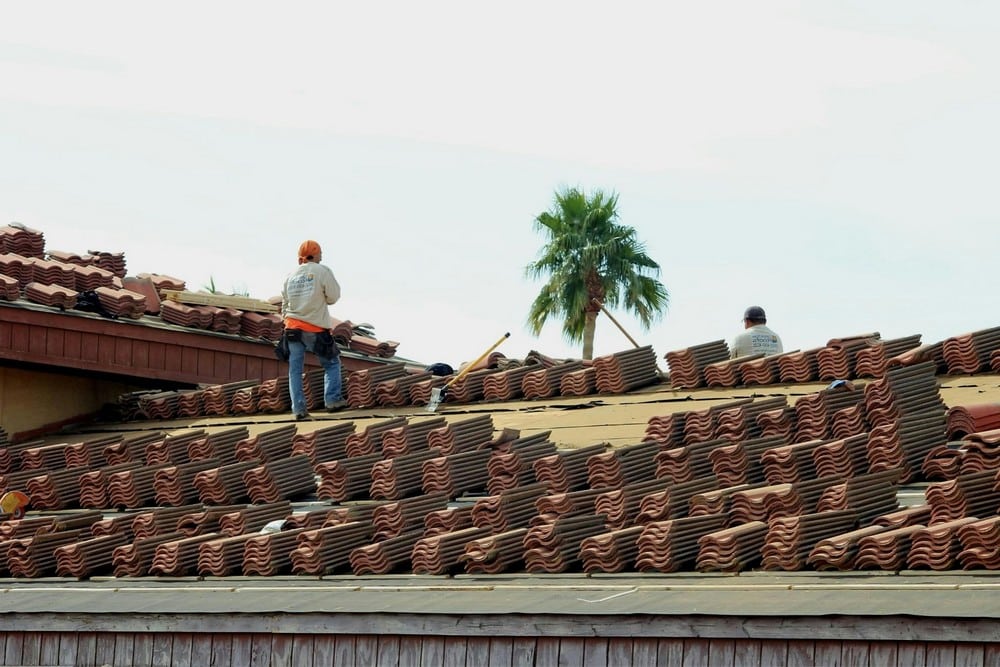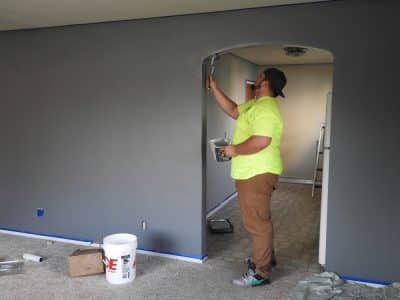We often overlook our roofs until trouble strikes. Yet, even tiny cracks can snowball into expensive nightmares if neglected. Spotting issues early isn’t just wise, it’s crucial to sidestep future headaches.
While pros like LA Roof Masters are there to help when things get tricky, you don’t have to be a roofing expert to spot trouble. A little know-how and a quick look here and there can keep your roof in good shape and your home dry and safe. Let’s break down why tiny roof issues matter, what to watch for, and how to handle them before they spiral out of control.

Why Should You Care About Small Roof Damage?
Imagine your roof as the ultimate protector of your home, standing strong against the elements like rain, wind, sun, and pests. Every crack or worn spot on your roof is a potential entry point for water and other issues to seep in unnoticed. These seemingly small vulnerabilities can lead to significant damage over time if left unchecked.
A cracked shingle or a missing patch of granules might not seem urgent. But that tiny flaw is where leaks start. Moisture can get trapped under your shingles, soaking into the wood underneath. Over time, this leads to rot, mold, and sometimes even structural damage.
And here’s another thing: ignoring small damage can shorten your roof’s lifespan. Instead of enjoying years of protection, you could be facing expensive repairs or a full roof replacement much sooner than you want.
Spot These Early Warning Signs Before They Get Worse
You don’t need a ladder or a toolbox to start watching for signs your roof might need some love. Here are the most common early damage clues you can catch yourself:
1. Shingles That Are Cracked, Curled, or Missing
Shingles are your roof’s armor. If they’re curling at the edges, cracking, or some are missing altogether, it means your roof’s protective layer is wearing thin. Wind and rain can get in through these gaps, causing leaks.
2. Granules in Your Gutters
Shingles have tiny granules on their surface to protect against sun damage and add weight. When you find a bunch of these granules in your gutters or downspouts, it’s a sign your shingles are breaking down.
3. Water Stains Inside Your Home or Attic
Spots or stains on your ceiling or walls, especially if they look dark or damp, mean water has made its way inside. A little drip can turn into a big problem fast.
4. Loose or Missing Flashing
Flashing is the metal or rubber seal around chimneys, vents, and skylights that keeps water out. If you see it’s bent, cracked, or missing, that’s an open invitation for leaks.
5. Moss, Algae, or Black Streaks
Green moss or black streaks aren’t just ugly—they hold moisture against your roof, making shingles deteriorate faster.
6. Sagging Areas on Your Roof
If parts of your roof look like they’re dipping or sagging, don’t wait around. This usually means water damage or rotting wood underneath and needs urgent attention.
How Tiny Roof Problems Can Blow Up Into Big Repairs
It’s tempting to think a cracked shingle or a few granules gone won’t matter. But that’s how it starts. Here’s what can happen if you let small damage slide:
- Water Finds Its Way In: Once the shingles lose their grip, water seeps under them. This soaks the wood decking beneath and eventually leaks into your living spaces.
- Storm Damage Gets Worse: Missing granules and loose shingles make your roof vulnerable to strong winds, heavy rain, or hail. This quickens wear and can turn small issues into full-on roof damage.
- Mold and Mildew Take Hold: Moisture trapped under the roof creates a perfect breeding ground for mold, which damages materials and isn’t great for your family’s health.
- Critters Move In: Small cracks are just the kind of welcome mat rodents and insects look for.
- Repair Costs Go Up: Fixing a cracked shingle is easy and affordable. Waiting means bigger repairs and bills that can catch you off guard.
Quick and Safe Ways to Check Your Roof Yourself
You don’t need to be a professional to keep an eye on your roof’s health. Here’s a simple plan to spot trouble before it gets serious:
Step 1: Look From the Ground
Take a stroll around your home and grab those binoculars if you have them handy. Scan the roof for any signs of damaged shingles, moss patches, or debris. This simple yet effective inspection can provide valuable insights into the condition of your roofing system.
Step 2: Peek Inside Your Attic
To truly understand the condition of your attic, grab a flashlight and embark on a meticulous inspection. Scan for water stains, moist insulation, or any indications of leaks. This straightforward action can reveal hidden issues that may not be immediately apparent from the exterior.
Step 3: Ladder Inspection (If You Feel Comfortable)
If you’re handy and have someone to assist you, carefully climb a sturdy ladder to inspect shingles, flashing, gutters, and roof integrity. Always prioritize safety and avoid taking risks if you’re unsure.
Step 4: Clean Out Your Gutters
Inspect your roof regularly for granules, leaves, or other debris. Granules on your shingles could indicate that they are losing their protective coating. This is a crucial step in maintaining the integrity of your roofing system and ensuring its longevity.
When Should You Bring in the Experts?
While DIY checks can be helpful, there are certain aspects of roof maintenance that should be left to the experts. If you observe leaks, sagging sections on your roof, or issues with flashing, it’s time to reach out to a professional roofing contractor who has extensive experience and knowledge about roofs.
Professional inspections can find hidden issues before they become obvious problems. Many roofing companies offer routine checkups, which are smart investments for keeping your roof in top condition year-round.
Easy Tips to Keep Your Roof in Good Shape
Keeping your roof damage-free doesn’t have to be a full-time job. Try these simple habits:
- Regularly maintaining clean gutters is crucial to the overall health and longevity of your roof. By keeping your gutters free of debris, you can prevent water backup that may lead to damage along the edges of your roof. This simple task can help protect your investment in roofing services and repairs, ensuring that your home or commercial property remains in top condition for years to come. Don’t overlook this important step in roof maintenance
- Trimming tree branches is a crucial step in maintaining the integrity of your roof. By avoiding branches that rub against your roof or risk breaking off during storms, you can prevent costly damage and ensure the longevity of your roofing system.
- Safely eliminate moss and algea growths without causing harm to your shingles. This is an essential roof maintenance task as tese organisms can cause damage over time if left unchecked, leading to potential leaks and costly repairs down the line. By taking proactive measures to remove them safely, you can protect your investment and extend the lifespan of your roof.
- Maintaining proper attic ventilation is crucial in prolonging the lifespan of your roof. By preventing heat and moisture buildup, you can avoid unnecessary wear and tear on your roofing system. This simple step can make a significant difference in the longevity of your roof, ensuring that it remains in top condition for years to come.
- Stay ahead of costly repairs with annual roof inspections. When it comes to maintaining your roof in top condition, early detection is key. Don’t wait until a leak or other emergency arises, ensure that your property is ready for whatever weather may come its way.








